Like One of Us
An interview with performative photographer Nandini Valli Muthiah on recreating and revisiting mythic stories and godly heroes and their collective contemporary angst
Praveena Shivram
What if God was one of us?
Just a slob like one of us
Just a stranger on the bus
Tryin’ to make his way home?
In 1995, Joan Osborne’s ‘What if God was one of us’ was released and nominated as the Song of the Year at the Grammy’s that year. In 1996, MTV in India was launched. In 1997, I heard and saw the song for the first time. I was 15 then and something about God being ‘just a stranger on the bus’ was like a revolutionary call for action. My homogenised lens of divinity was irrevocably cracked and cast aside, and it completely changed the way I perceived ‘God’. I didn’t have a visual for it that resonated with the familiar tropes I had grown up with then. Thanks to Nandini Valli Muthiah, I have one – actually, several – now. And the trigger for Nandini, too, rests in this iconic song. ‘I was driving with a friend in December 2003, while I was on vacation from my photography course in Bournemouth, and he was saying something about wanting to shoot a calendar featuring Ravi Varma’s calendar art images and I was saying that it should be like the song, “What if God was one of us”, like a modern-day interpretation of what God would look like in a car or in a hotel etc… and it triggered something in me and it eventually led to the Definitive Reincarnate series,’ says Nandini over an e-mail interview.
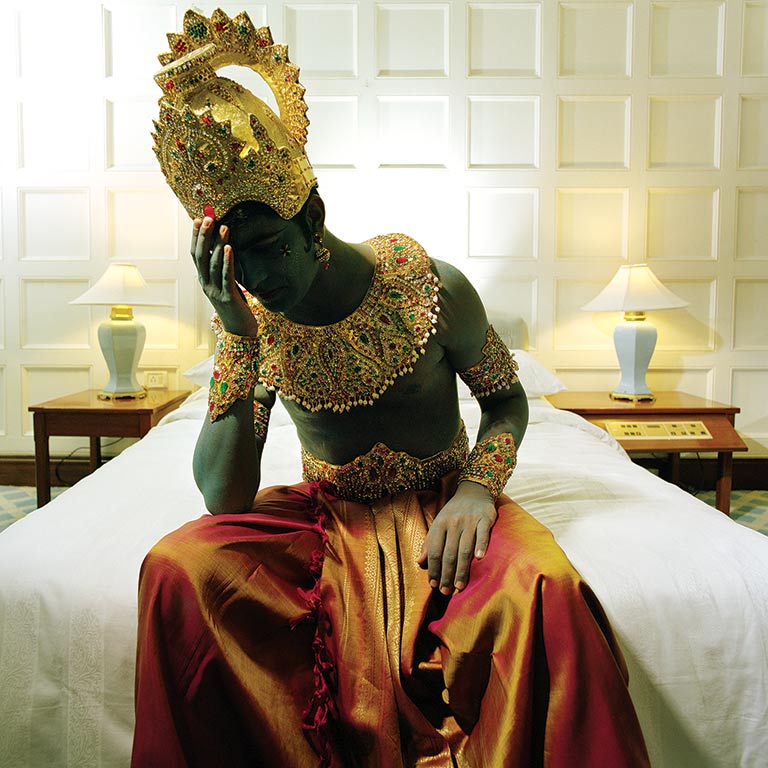
Nandini’s photographs effortlessly contemporise mythological characters – or Gods, if we will – and humanises them, despite the obvious use of symbolism and colour. A very blue-skinned Krishna in a hotel room, sitting despondently on the bed, his body language exuding the crushing banality of everyday life is the stranger on the bus Joan sang about 23 years ago. In India, especially, the lines between mythology, religion and sociopolitical history are deeply entangled and conveniently blurred. It is hard to separate them, and yet, by bringing attention to this very merging of ideologies and realities, Nandini’s photographs manage to delineate them all. It is as if that space within the photograph is free from judgement because it completely subverts the rationality we are comfortable with and places it in an uncomfortable moment of truth – an inconvenient truth, if we will. And this play with reality within reality, like a story within a story, a myth within a mythology, is evident in all of Nandini’s work. ‘I don’t think anything is free from judgement,’ says Nandini. ‘We judge everything in life. If you like the image, you are judging it; if you hate the image, you are judging it. Whatever social or political attachments have come to be associated with these works was not my doing or intention. It is the person who sees the image who decides what to attach to the image. I wanted to bring to life what I saw in my mind’s eye. It came out better than I had imagined. I wanted to merely merge reality and mythology and nothing else. I was looking for beauty also.’
Excerpts from the interview
You have said in earlier interviews that you ‘construct’ an image and have named American photographer Gregory Crewdson as a major influence. Do you think by constructing an image, by necessarily looking at it from the outside, you are then able to keep the essence of the image at the centre? It’s like the many little details help in outlining the image further. Would that be the right interpretation?
I think if you are able to convey the idea of the image to the audience, you have done the job. By controlling certain elements such as the space, people and lighting, you can certainly keep the essence of the image at the centre. After all, that is the point, is it not, of constructing? But there is only so much you can control in a constructed image. I do like to leave some elements to fate! Sometimes it works, sometimes it doesn’t. Like my model. The first one I had shortlisted didn’t show up so I roped in a friend at the last minute and he made such a wonderful subject. I rely on luck as much as construction! But the smaller details do count, so, yes, the many details do help in outlining the image further.
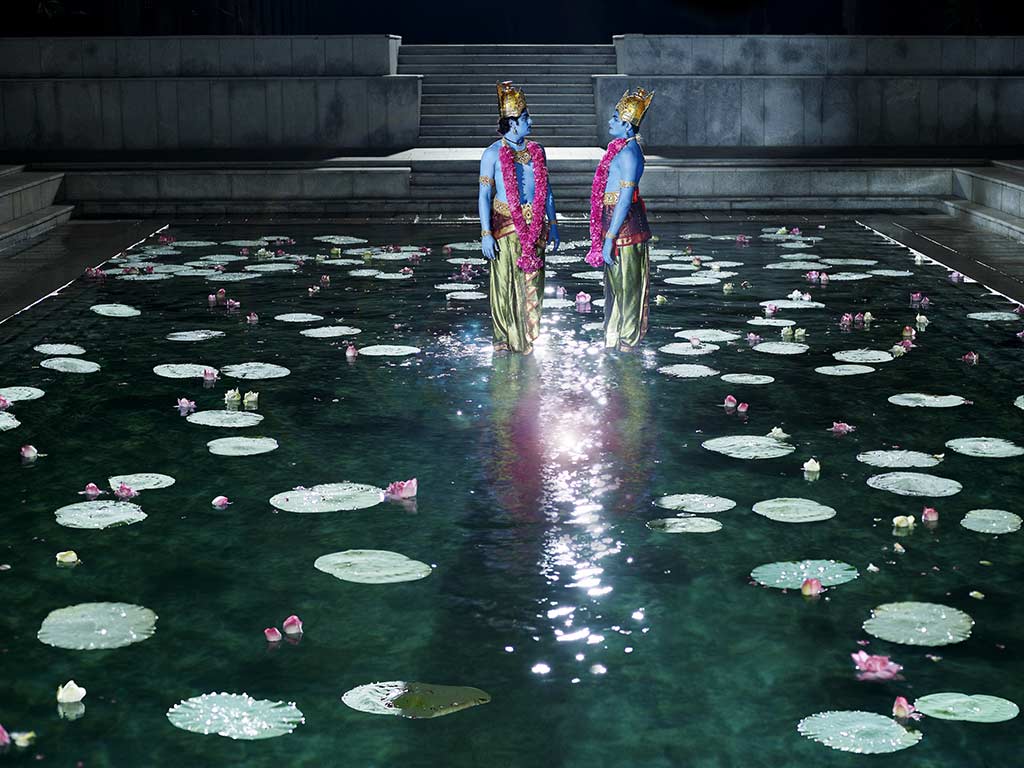
Since you mention Tamil calendars and old mythological films, I wanted to know how you manage to bring in that cinematic gravity, without the melodrama, to your photographs. There is something larger-than-life in your images (like heroes in films) and something ordinary (like daily calendars), and the balance between the two is just right. How conscious is this process?
I am meticulous about certain details such as costume and make-up, although the colour balance seems to happen naturally without any preplanning. To a great extent, the location is predetermined. The lighting is also a part of the photograph because that is what gives the cinematic melodrama; that is what makes the hero look larger than life and, of course, it gives the picture a setting in a particular category of photography. But if I affix certain influences to the image, I have to be honest and say that it is an afterthought. I don’t think I can shoot an image with such predeterminations as you suggest. I never set out to arrive at this or that. But I do like to do a shoot and then if that doesn’t work, I shoot it again.
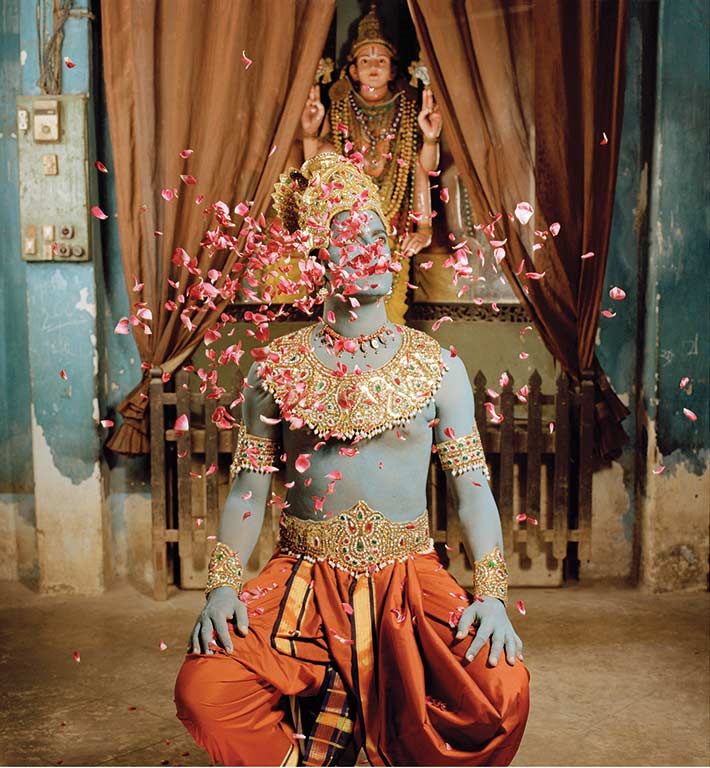
In the series ‘Remembering to Forget’, I loved how the idea of a fancy dress competition was completely subverted. And it was the backdrops that created the aura of the image for me. I wanted to know, though, why children and not adults. What was it about the specificity of that element of innocence that made the image for you?
Simple: the idea was not to subvert but to show it as it was – a children’s fancy dress competition. We have all (in India) mostly been part of a fancy dress competition for a birthday party or for a school programme or for a public function. Initially, I wanted to name the series Variety Entertainment, which is what cultural programmes at a school function are called. But what led me to call the series Remembering to Forget is for the icons that the children/parents choose to dress them as. We have chosen to forget these people who are a part of our culture and history. We take them out every so often, dust them and concise what they stood for by making these little people pretend to be them and personify them. If I had done the series with adults, it would not have been recreating a memory of mine, of going to a fancy dress party/ competition as a child. And children, by nature, are innocent until they reach a certain stage of life. My intention was to capture the moment they came dressed as a certain historical person, not their innocence. I like your point of view, though, that the concept is subverted and if that is what some people imagine the project is about, then wow for me!
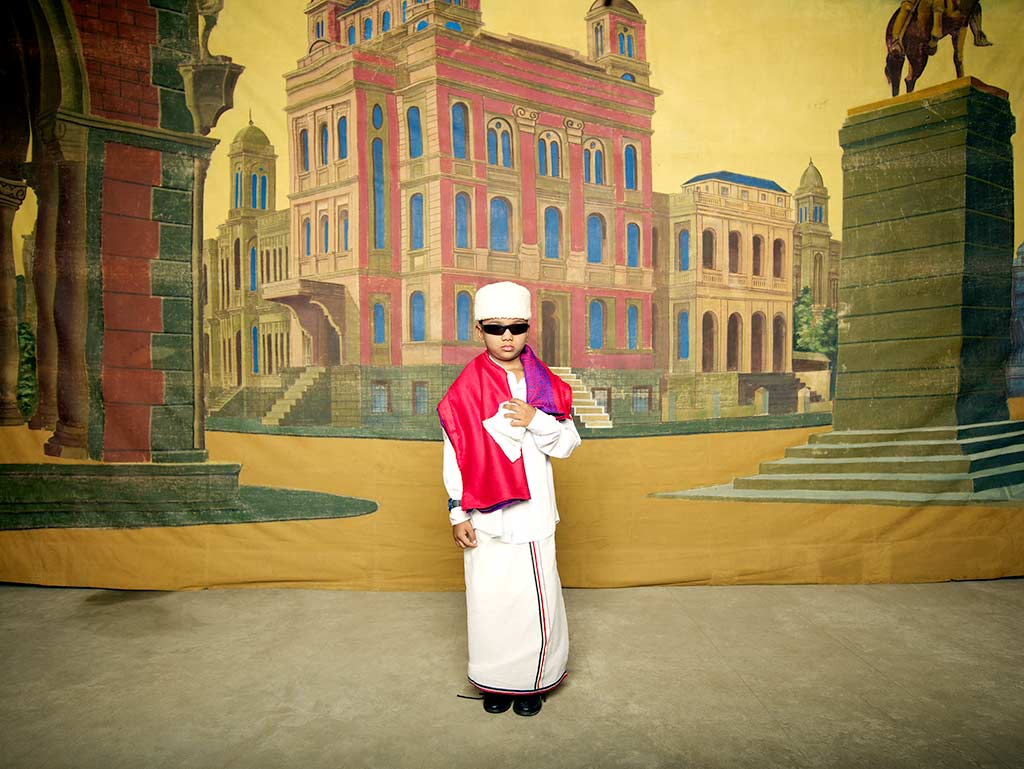
There is also a lot in how your subjects use their bodies and how colours are juxtaposed with one another. It is a performative photograph, yes, but it is also a portrait. It’s almost as if you are directing a particular scene just for one perfect shot. Does the process ever overwhelm you?
I get a real adrenalin rush when I am shooting or directing the person to pose. And, yes, I am directing to get one perfect shot, before I move on to trying to capture the next perfect shot. What overwhelms me is the post production! And, eventually, this is where I get stuck. If the project sees the light of day, it is a big deal. Very often, I just cannot bring myself to deal with this part of the process until the very last minute!
Because you work primarily in the digital photography space, how do you think technology changes how we perceive the vision of an image?
I think technology has changed the course of photography. Everyone with a Smartphone thinks he or she is the next biggest thing in photography. What makes a good photograph today is not what made a good photograph in the past. Anyone and everyone wants to make money by taking awful pictures and photo-shopping them. None of those images will be stable if you blow it up bigger than 12x16. Because of technology, the image seems to be only for a fleeting moment. It doesn’t last forever. You can delete and carry on like that moment never existed. That was not the case with analogue photography. While I am primarily working in the digital platform, I don’t really care for it. It is a means to an end.
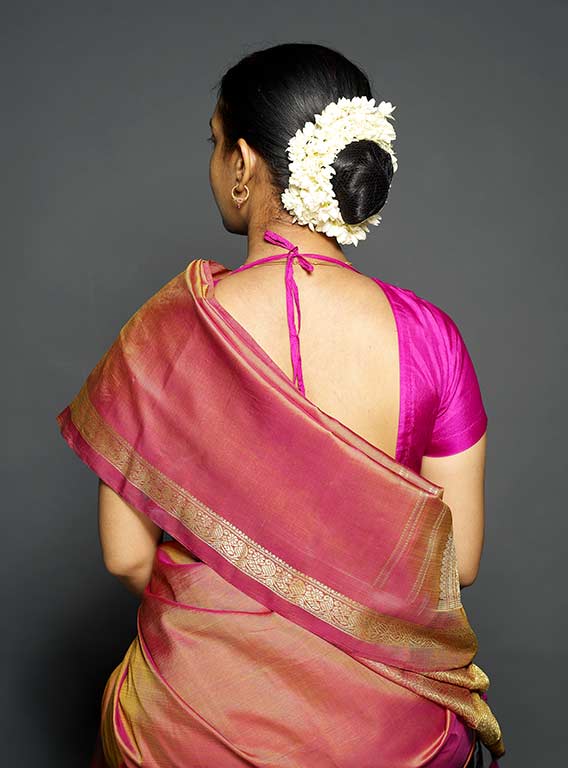
And, finally, if you had to put yourself in one of your photographs, how would you construct it – would you be at the centre or at the periphery?
I already have, I am in one of my series! You will have to figure out which one. It is a lesser-known series of mine. But to answer your question: I want to be at the centre of the image, better than I am in real life. To look like a vision! It is the one narcissistic trait photographers have I think, to look larger than life!
______________________________________________________________________________________________________
All Images Courtesy of Nandini Valli Muthiah.
Share